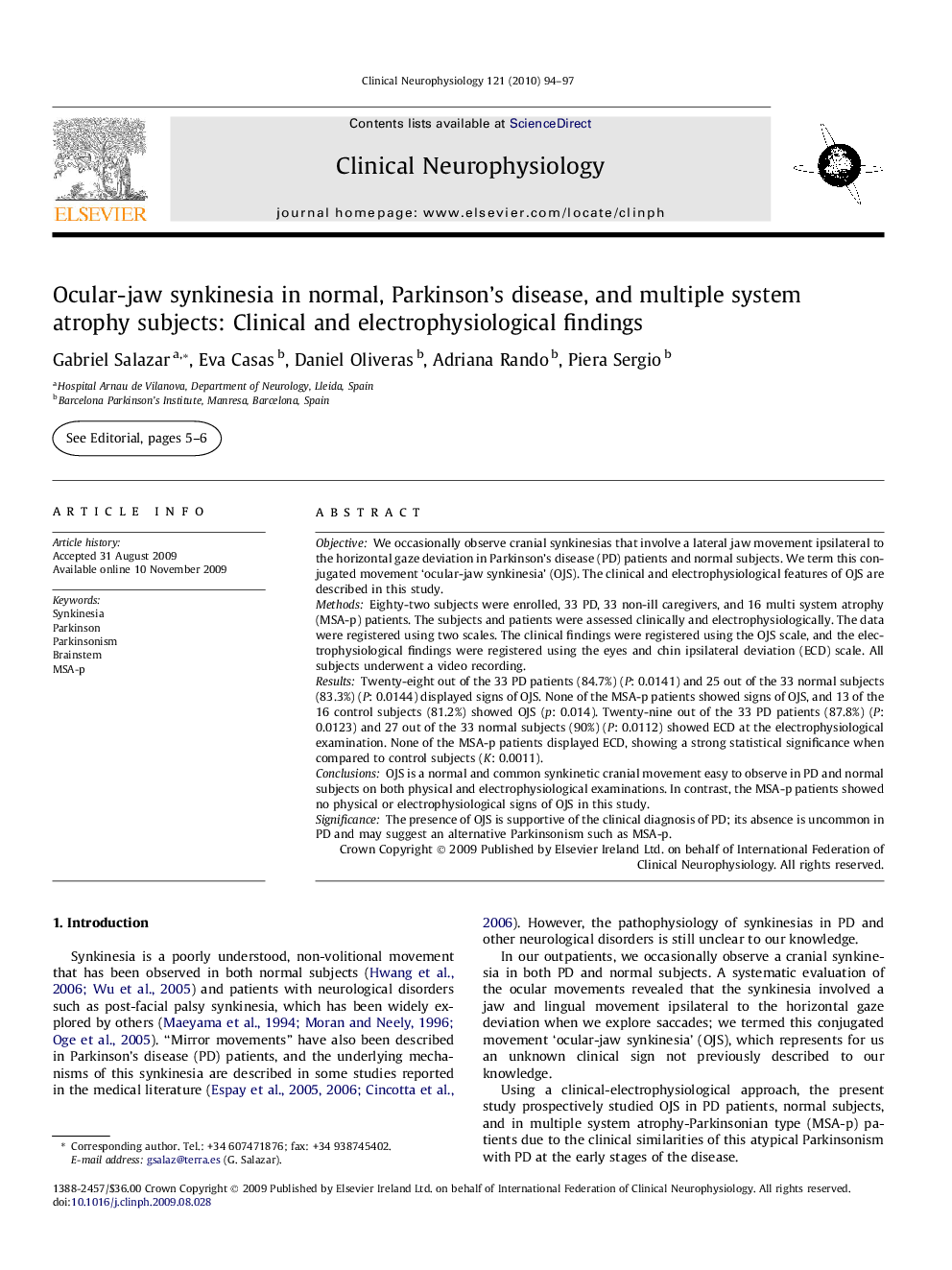| Article ID | Journal | Published Year | Pages | File Type |
|---|---|---|---|---|
| 3045354 | Clinical Neurophysiology | 2010 | 4 Pages |
ObjectiveWe occasionally observe cranial synkinesias that involve a lateral jaw movement ipsilateral to the horizontal gaze deviation in Parkinson’s disease (PD) patients and normal subjects. We term this conjugated movement ‘ocular-jaw synkinesia’ (OJS). The clinical and electrophysiological features of OJS are described in this study.MethodsEighty-two subjects were enrolled, 33 PD, 33 non-ill caregivers, and 16 multi system atrophy (MSA-p) patients. The subjects and patients were assessed clinically and electrophysiologically. The data were registered using two scales. The clinical findings were registered using the OJS scale, and the electrophysiological findings were registered using the eyes and chin ipsilateral deviation (ECD) scale. All subjects underwent a video recording.ResultsTwenty-eight out of the 33 PD patients (84.7%) (P: 0.0141) and 25 out of the 33 normal subjects (83.3%) (P: 0.0144) displayed signs of OJS. None of the MSA-p patients showed signs of OJS, and 13 of the 16 control subjects (81.2%) showed OJS (p: 0.014). Twenty-nine out of the 33 PD patients (87.8%) (P: 0.0123) and 27 out of the 33 normal subjects (90%) (P: 0.0112) showed ECD at the electrophysiological examination. None of the MSA-p patients displayed ECD, showing a strong statistical significance when compared to control subjects (K: 0.0011).ConclusionsOJS is a normal and common synkinetic cranial movement easy to observe in PD and normal subjects on both physical and electrophysiological examinations. In contrast, the MSA-p patients showed no physical or electrophysiological signs of OJS in this study.SignificanceThe presence of OJS is supportive of the clinical diagnosis of PD; its absence is uncommon in PD and may suggest an alternative Parkinsonism such as MSA-p.
